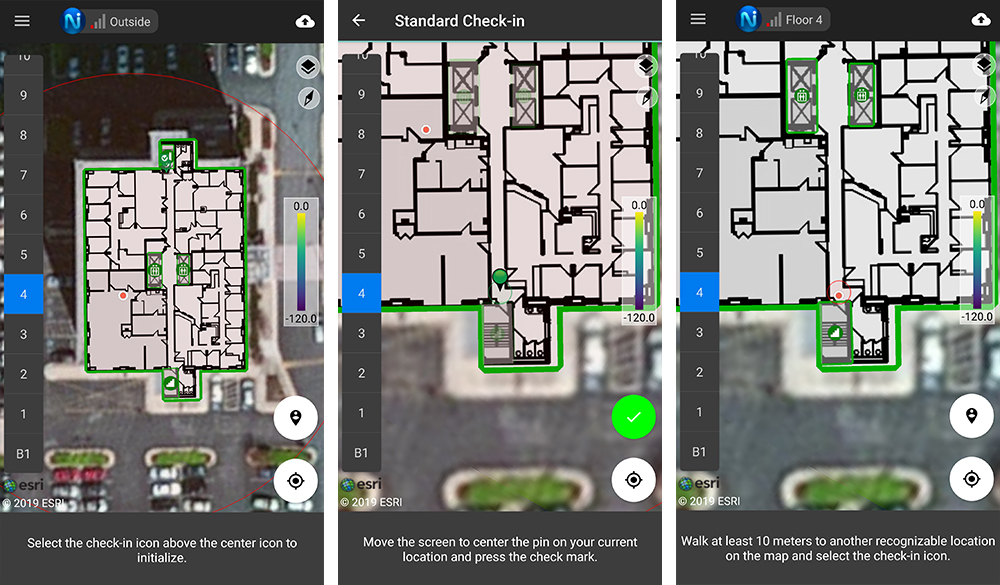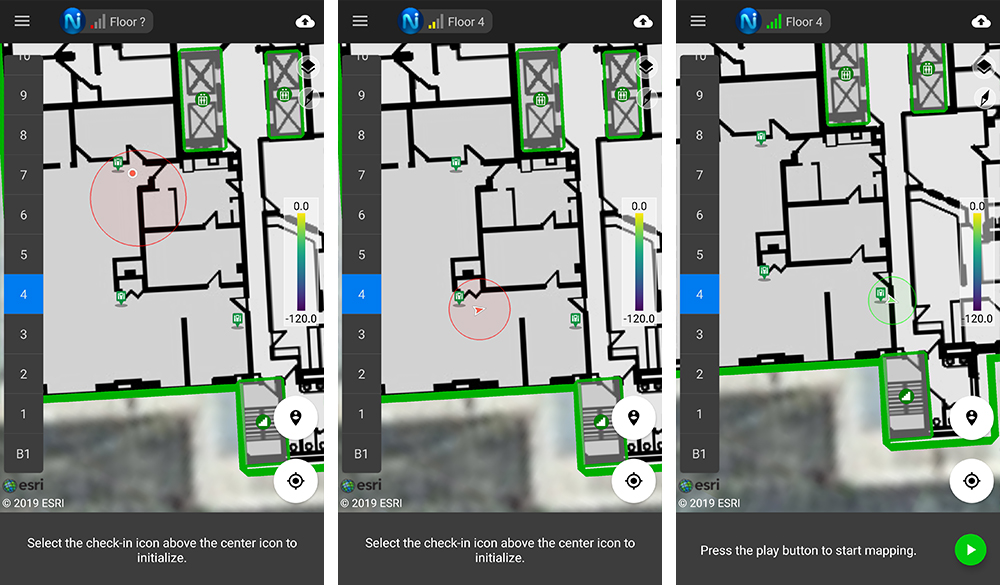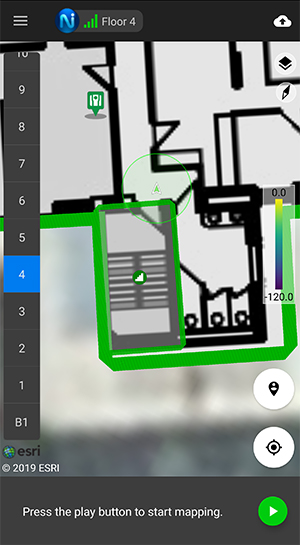Initialization
Initialization is the process of providing NEON with enough information to solve the user’s heading, scale and drift error. When the software first starts up, it has no information about how the user walks or what direction they are facing. It requires the user to walk around to calibrate to that users’ specific gait.
Initialization is similar to Google Maps. When a user starts the app in a parking garage, the user has to travel some distance before it locks on to the heading. The main way to initialize in Signal Mapper is with double check-ins.
Double Check-ins
The most efficient way for signal mappers to initialize is with double check-ins. The user will walk to an easily identifiable location on the map (typically a hallway intersection or doorway) and check in on the Signal Mapper app by placing a pin at their actual location. Once the check-in is applied, the user’s location will update to that location. It is common for the heading to be off during the first couple of steps. This will be corrected with the second check-in.

The user walks about 10 meters and performs another check-in. After completing the second check-in, initialization will either succeed or fail. If it succeeds, the play button will be displayed and signal mapping can begin. If it fails, the user is prompted to walk 10 meters and check in again.

Initialization Status
The initialization (“Nav Lock”) status displays 1-4 bars indicating the ability to maintain the current 2D location accuracy in areas without GPS or infrastructure.

More bars can be obtained by performing a user check-in, or by walking around an area with GPS, infrastructure (BLE Beacons, UWB Beacons, Stairs, Elevators, etc.). If the “Nav Lock” status displays a floor number, it indicates floor level accuracy will also be maintained.
Once a full “Nav Lock” of four bars is achieved, the user may press the play button to start Signal Mapping.

Features and References
Features are stairs, elevators, entrances, and WiFi Grids. References are BLE beacons and UWB beacons. Features and references may be placed in NEON Command and then automatically synced with the Signal Mapper application. The features and references will be used to initialize the user.

For example, three BLE beacons can be placed 10 meters apart in a right-angle formation. The user can walk by each beacon to get an automatic correction to that beacon. When the user walks to the third beacon, they should be initialized. The beacons are displayed in the image below with the green icons.

Similarly, the user can walk through two or more building features to get a correction to that feature to initialize. The features are displayed below with the green icons.
